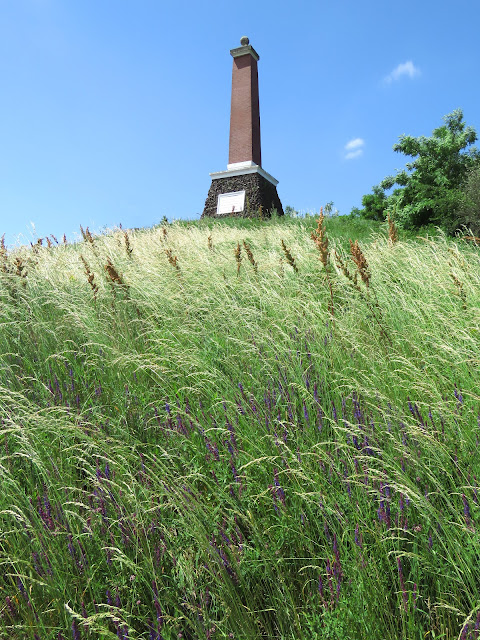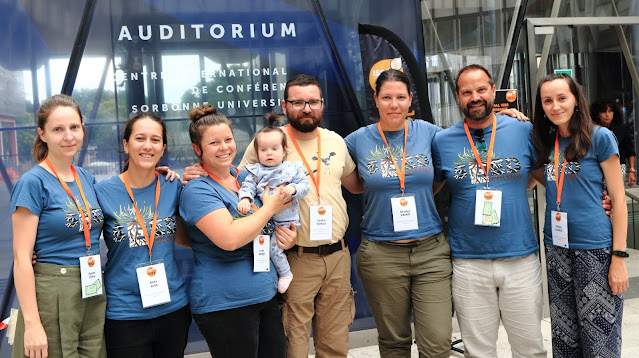Long-term dispersal of diaspores (seeds, fruits) is ensured by seed dispersal vectors, such as wind (anemochory), water (hydrochory) and animals (epi- and endozoochory). Nowadays, one of the most effective seed dispersal vectors are humans. The key our efficiency is the rapidly growing rate of global transport, trade and tourism, which enables us to move more and more easily and quickly between distant biogeographical regions, and even between continents. People can travel large distances in a short time (even from one continent to another) and connect areas that would otherwise have no connection.
Seed dispersal on clothing (epianthropochory) can be considered a special form of epizoochory. This type of dispersal can be very important from a conservation point of view. Based on the results of studies so far, nearly 500 species have been registered to be able to spread on clothing. Most of these plants are weed and invasive species that cause serious conservation problems, especially in the isolated habitats.
 |
| An extreme case of epianthropochory :) |
In our study, first-authored by Katalin Lukács and published in the journal Science of the Total Environment, we analysed the potential mechanisms that might affect the outcome of seed dispersal on clothing.
Our research involved 88 volunteers in a multi-site field experiments with samples collected from Hungary, Romania, and the Czech Republic. We accompanied volunteers on 39 sampling occasions during fieldwork or filed trips and provided each participants a new pair of socks at the beginning of the day. At the end of the outdoor activity, we collected the seeds from socks. We also collected seeds from the inside and outside of volunteers’ shoes (a total of 251 samples and 2,008 subsamples were collected). During the experiment, we also registered the sampling date, distance walked, and time spent outside, a list of plants to characterise the species pool of the visited site and the participants’ clothing type. The field experiment was complemented by a questionnaire survey to assess the people’s habits that might be relevant to the dispersal process under study.
 |
| The process of sample collection and sample processing. |
Our results show that dispersal on clothing can play an important role in seed dispersal between habitats and regions. The process allows the spread of many species: we have found nearly 36,000 seeds from nearly 230 plant species. Interestingly, most seeds were spread by men and field biologists during visits to grassland habitats. On the shoes and socks of the most efficient dispersers we occasionally found more than 2,000 seeds. The type of clothing and footwear also had a significant effect on the dispersal efficiency: wearing long pants and high-top shoes can decrease seed dispersal potential compared to wearing short pants and low-top shoes (e.g., sneakers).
Based on the results of the study, we highlight the complexity of the process of seed dispersal on clothing. Informing people about this phenomenon is crucial, as our individual habits and behaviour can reduce the spread of weeds and invasive plant species.
Citation of the paper:
Lukács, K., Tóth, Á., Kiss, R., Deák, B., Rádai, Z., Tóth, K., Kelemen, A., Bátori, Z., Hábenczyus, A.A., Tölgyesi, C., Miglécz, T., Godó, L., Valkó, O. (2024). The ecological footprint of outdoor activities: Factors affecting human-vectored seed dispersal on clothing. Science of the Total Environment 906: 167675.
The article is open access and can be freely downloaded from the journal homepage (please click here).
We summarized the results in a graphical form in this graphical abstract:
Abstract
In the Anthropocene, humans are among the most abundant long-distance seed dispersal vectors globally, due to our increasing mobility and the growing global population. However, there are several knowledge gaps related to the process of human-vectored dispersal (HVD) on clothing. In a multi-site field experiment covering various habitat types in three countries of Central-Europe, we involved 88 volunteer participants and collected 251 HVD samples and 2008 subsamples from their socks and shoes. We analysed the number of diaspores and species in the samples. Specifically, we studied the effects of site characteristics (variables related to habitat types and season), vector characteristics (activity type, gender, clothing type, shoe type) and plant characteristics (species pool of the visited habitats and plant traits) on the number of diaspores and array of species dispersed. We assessed the habits of people that could be relevant for HVD with a questionnaire survey. A total of 35,935 diaspores of 229 plant taxa were identified from the samples, which indicates a huge potential of HVD in dispersing diaspores across habitats and regions. Most diaspores were recorded in grassland habitats, and more diaspores were dispersed during fieldwork than excursions. Clothing type also played a decisive role: there were more diaspores and species when wearing short-top shoes and short trousers than long ones. Even though our study was carried out mainly in natural or semi-natural habitats, a large number of dispersed species were disturbance-tolerants and weeds and only a few were specialists, suggesting the controversial role of HVD in conservation. At the individual level, people can reduce the number of diaspores through their clothing choices and diaspore removal habits, while providing adequate equipment for staff, operating cleaning stations, and increasing awareness of employees are main ways in which unintended diaspore dispersal can be tackled at the institutional level.







.jpg)













.png)